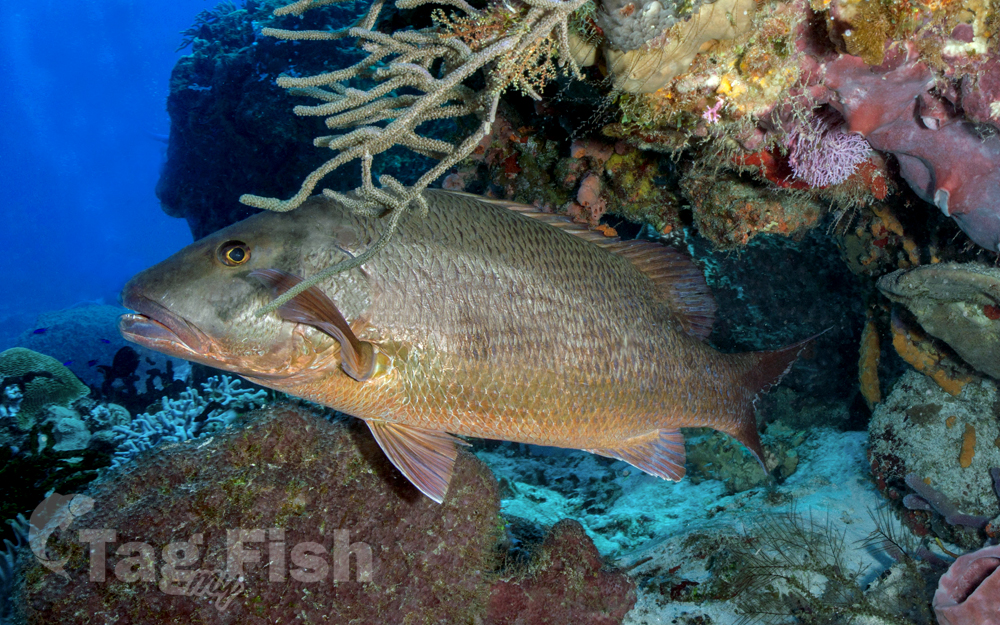Cubera snapper
(Lutjanus cyanopterus)

Classification
General data
The cubera snapper (Lutjanus cyanopterus), also known as the Cuban snapper, is a species of marine ray-finned fish, a snapper belonging to the family Lutjanidae. It is native to the western Atlantic Ocean. It is a commercially important species as well as being a sought-after game fish, though it has been reported to cause ciguatera poisoning.
Description
The cubera snapper has an oval-shaped, rather streamlined elongate body which is less deep than many other snapper species. It has a pair of front nostrils and a pair of rear nostrils which are simple holes in its snout. The mouth is relatively large with thick lips. The jaws are equipped with canine teeth, one enlarged pair being visible when the mouth is closed. The vomerine teeth are arranged in a crescent-shaped or triangular patch with no central posterior extension, with a tooth patch on each side of the roof of the mouth. The preoperculum has a weakly developed knob and notch.[7] This species has long pectoral fins, a continuous dorsal fin, and a truncate caudal fin. The dorsal fin contains 10 spines and 14 soft rays while the anal fin has 3 spines and 7-8 soft rays, there is sometimes a notch behind the spiny part of the dorsal fin.
The maximum total length recorded for this species is 160 cm (63 in) although 90 cm (35 in) is more typical, the maximum published weight is 57 kg (126 lb).
The overall color of this species is grey to dark brown with pale to dark grey flanks with some individuals showing a slight reddish hue on the body. The caudal fin is light grey, the pectoral fins may be translucent to pale grey and there is a bluish hue to the anal, pectoral, and pelvic fins. The juveniles show an indistinct barred pattern on the flanks.
Distribution and habitat
The cubera snapper is found in the western Atlantic Ocean. It occurs from as far north as Nova Scotia and as far south as Santa Catarina in Brazil, being found in throughout the Caribbean Sea and the Gulf of Mexico, and around Bermuda. There is a record from Flores Islands in the Azores. It occurs at depths between 1 and 85 m (3 ft 3 in and 278 ft 10 in). The juveniles shelter within beds of seagrass in inshore waters in mangroves and have been recorded entering freshwater. The adults move offshore where they inhabit rocky ledge and reef habitats.











